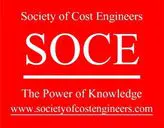Knowledge Library Library Index Cost Enginering Poster Criteria for Cost Software – Yes No DoD Cost Estimating Guide FACTON Cost Engineer In Purchasing FACTON Enterprise Product Costing Joint Agency CER Handbook Margin Calculator Maxtec Consultancy Learner Maxtex Financial Lecture University of Michigan Report on Software Comparision University of Michigan Final Report N/A
